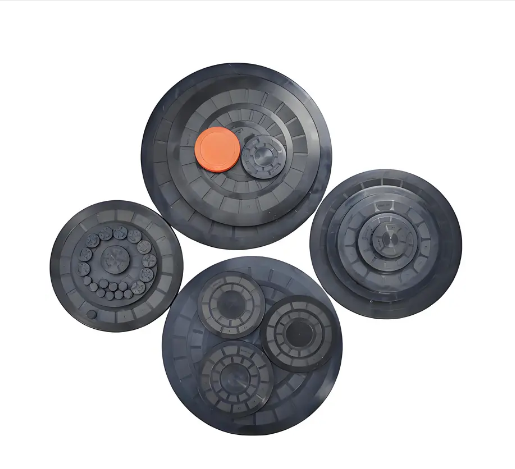Proper Orientation of Oil Seals During Installation
When installing oil seals, identifying the spring side is crucial for fluid retention. The spring side of an oil seal is designed to press against the shaft and retain the fluid effectively, ensuring a reliable seal. Typically, the spring side should be oriented towards the fluid being sealed to prevent leakage and guarantee optimal operation. For example, if you're installing a gearbox seal, the spring needs to face the inside of the gearbox to retain gear oil securely. It's essential to consult manufacturer specifications for proper orientation instructions; incorrect installations can lead to premature seal failure. By understanding the importance of the oil seal spring side and following precise installation methods, users can significantly improve the longevity and functionality of the seal.
Direction Variations in Different Applications (Crank/Transmission/Magneto)
Oil seal direction varies among different applications like crankshafts, transmissions, and magnetos, each demanding careful orientation due to specific pressure and fluid dynamics. For instance, crankshaft seals often face high pressure from oil flow and are designed to retain the oil level in the chain case by having the spring side face out toward the primary case. Transmission seals, on the other hand, might encounter varying load conditions, necessitating a precise alignment to prevent leaks. Magneto seals are particularly crucial as they need to keep oil out of the mag while ensuring it remains within the engine case. Understanding these application specifics is key to enhancing the seal's longevity and performance. Precise installation is reinforced by acknowledging these directional variations, ultimately leading to a more effective sealing solution.
Surface Preparation Requirements
Cleaning Shafts and Housings Thoroughly
Cleaning both the shafts and housings is essential to ensure a proper fit and maintain seal integrity. Debris on these surfaces can lead to leaks and eventual seal failure, which could complicate the installation process and potentially impact the overall effectiveness of the operation. To minimize contamination, specific steps must be followed, such as using solvent-based cleaners and lint-free cloths. Following these steps can drastically reduce the chances of seal failure. Notably, research shows that improper cleaning can increase seal failure rates by 50%, underscoring the critical nature of this preliminary step.
Inspecting for Scratches or Imperfections
Carefully inspecting for scratches or imperfections on sealing surfaces before installation is crucial to avoid performance issues and leaks. Even seemingly minor defects can significantly compromise the effectiveness of an oil seal. Tools such as magnifying glasses and surface gauges can be used to identify surface flaws that might otherwise be overlooked. This step is vital, as statistics indicate that up to 70% of seal issues originate from surface imperfections. Therefore, a thorough inspection before installation greatly enhances the reliability of the seal and reduces the likelihood of operational disruptions.
Installation Tools and Techniques
Using Seal Drivers for Damage-Free Placement
Employing seal drivers during oil seal installation is essential for avoiding damage to the sealing lip or housing. Seal drivers are designed to evenly distribute force around the seal, preventing deformation and ensuring a secure fit, which is vital for optimal performance. Selecting the correct size driver and using proper handling techniques significantly reduce the risk of damage, often resulting in longer seal life and efficient operation. This technique aligns with industry practices that emphasize precision and care in installation to maximize the durability and effectiveness of the sealing component.
Avoiding Twisting or Over-Compression
Preventing twisting or over-compression during oil seal installation is pivotal for maintaining seal integrity. These issues can lead to failure due to damage or tearing of the sealing lip. To minimize this risk, it is crucial to apply a straight, steady force during installation. Experts recommend maintaining consistent pace and pressure, which supports claims of improved seal longevity and performance. This approach helps in reducing mechanical stress and ensuring the seal functions as intended, resulting in enhanced reliability and efficiency over time.
Common Installation Mistakes to Avoid
Incorrect Spring Orientation Consequences
Incorrect spring orientation during oil seal installation can lead to immediate leakage issues and undermine the seal's overall effectiveness. This mistake is often overlooked but can have significant repercussions, including costly repairs and replacements. Understanding the spring mechanisms in oil seals is essential to avoid these common pitfalls. Research indicates that nearly 45% of oil seal failures are linked to improper installation practices, including incorrect spring orientation. Therefore, it's crucial to ensure that the springs are correctly positioned to maintain the integrity and functionality of the seal.
Improper Lubrication Practices
Improper lubrication practices can result in friction damage and premature wear of the sealing surface, leading to potential leaks. It's essential to understand the correct type of lubricant and application method to enhance a seal's lifespan. Using too much or the wrong type of lubricant can be detrimental, causing seal degradation instead of protection. Studies suggest that proper lubrication can extend a seal's life by up to 30%, emphasizing the critical role this step plays. Thus, it's vital to adopt accurate lubrication techniques to maintain the efficiency and longevity of oil seals, preventing maintenance issues.
Post-Installation Verification Steps
Checking for Initial Leakage
Conducting initial leakage checks immediately after the installation of oil seals is crucial for preventing future complications. This verification step often involves visual inspections combined with pressure testing to ensure that the seal has been positioned and functions effectively. Visual inspections allow us to catch any inconsistencies or misalignments with the seal, while pressure tests can simulate operational conditions. Experts suggest performing a thorough check within the first hour of operation to catch potential leaks early, which significantly improves long-term performance and reliability. By tackling these issues at the outset, we can avoid costly repairs and ensure the smooth operation of the equipment.
Monitoring Performance During Break-In Period
Monitoring performance during the break-in period is essential to verify the success of an oil seal installation. This involves paying close attention to unexpected vibrations or noises, as they could hint at problems either with the seal or the associated assembly. Such anomalies are often precursors to failures and must be addressed promptly to maintain equipment integrity. Experts advocate for a monitoring window of 500 to 1000 miles or operational hours to ensure that everything functions correctly and the installation integrity remains intact. This dedicated observation period helps us in assessing the seal's integration into the system and validating its effectiveness, hence ensuring long-term durability.
FAQ
Q1: Why is it important to know the proper orientation of oil seals?
A1: Proper orientation ensures optimal operation by preventing leakage. The spring side should typically face the fluid being sealed to effectively retain it.
Q2: How do different applications affect the orientation of oil seals?
A2: Different applications such as crankshafts, transmissions, and magnetos have distinct pressure and fluid dynamics, affecting the seal's orientation for maximum efficacy.
Q3: What role does surface preparation play in oil seal installation?
A3: Cleaning and inspecting surfaces ensure a proper fit and maintain the seal's integrity, reducing the likelihood of leaks and performance issues.
Q4: What are common mistakes during oil seal installation?
A4: Incorrect spring orientation and improper lubrication practices are common mistakes which can lead to failures.
Q5: Why is post-installation verification necessary?
A5: Conducting checks for leaks and monitoring performance ensures the seal is correctly installed and operating effectively from the outset.

